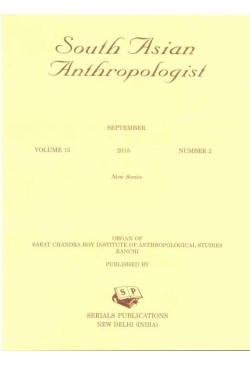
South Asian Anthropologist
Frequency :Bi-Annual
ISSN :0257-7348
Peer Reviewed Journal
Multinomial Logistic Regression of Factors Influencing Malnutrition among 6 to 10 Year Old Children in Rural Area of Rajshahi District, Bangladesh
Knowledge and Attitude towards HIV/AIDS among the Women of Jaintia Hills, Meghalaya
Understanding the Contraceptive Behaviour of Urban Karbis, Assam
Globalization, Community Forest and Women Empowerment in Nepal
Additional Expenditures of Insured Patients during Hospitalization: A Case Study of Aarogyasri Scheme in Two Network Hospitals in Hyderabad City, Telangana
Rice from A.ba: Stories, Rituals and Practices of the Garos
Effect of Obesity on Blood Pressure among the Young Adult Bengalee Hindus of Madhyamgram, North 24 Parganas, West Bengal
Awareness of Janani Shishu Suraksha Karyaakram amongst the Pnar Tribal Women of Jaintia Hills District of Meghalaya
Cosmology, World View and Ecology among North-East Indian Tribes: A Critique
Age and Sex Variations in Anthropometric Characteristics and Body Composition of Adults Belonging to the Rajbanshi Population of Darjeeling District, West Bengal
Origin and History of the Santal Ethnic Group of Nepal